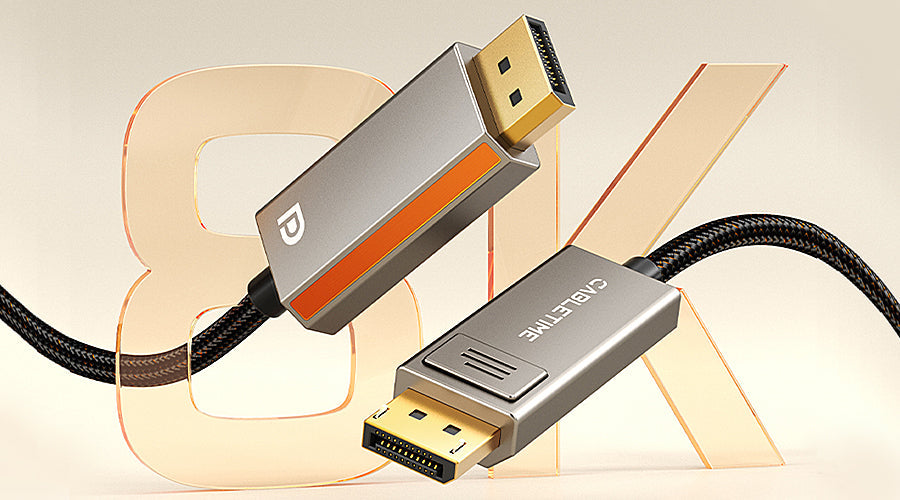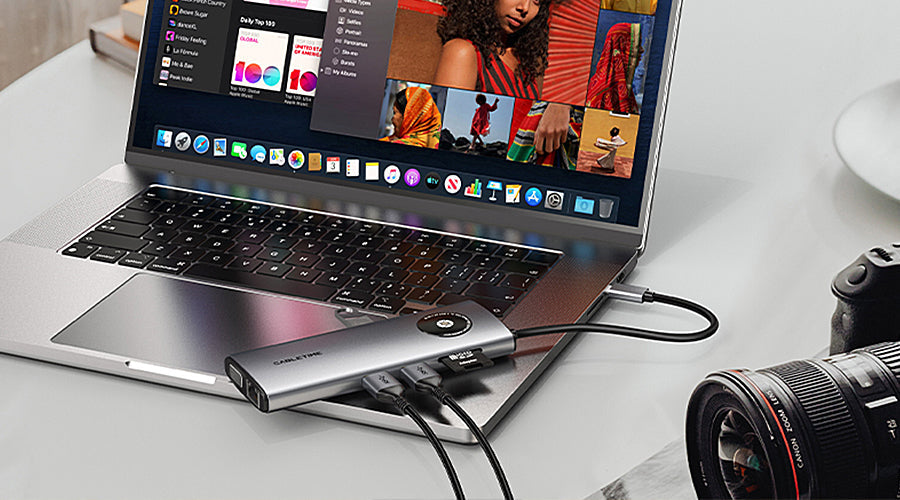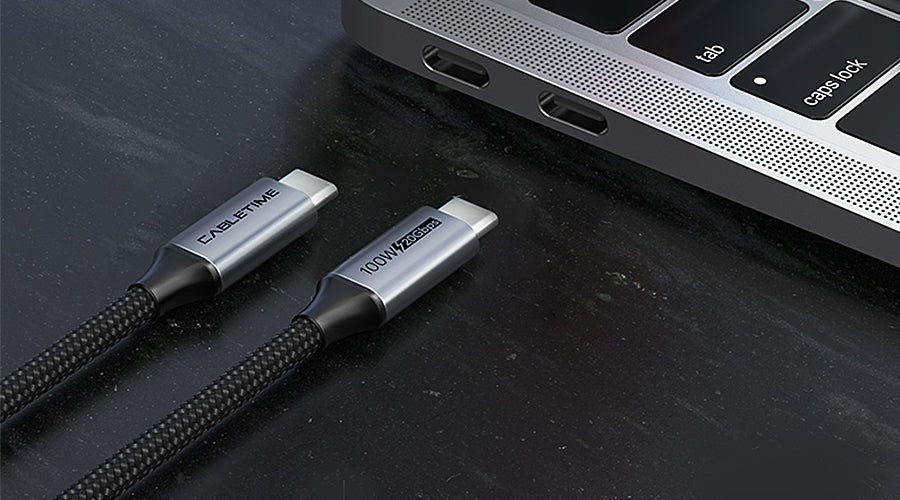Сжатие потока отображения (DSC) становится все более важной технологией для передачи изображений и видео высокого разрешения через интерфейсы, такие как HDMI и DisplayPort. Поскольку разрешения дисплеев продолжают развиваться, DSC позволяет сжимать данные практически без потери визуального качества, что значительно снижает требования к полосе пропускания. Это позволяет достичь более высоких разрешений, более высокой частоты обновления и функций отображения следующего поколения.
В этом всеобъемлющем руководстве мы рассмотрим все, что вам нужно знать о DSC — от основ того, как он работает, до его применения, преимуществ, проблем и перспектив на будущее. Давайте погрузимся!
Содержание
- 1. Основы DSC: что это такое и как это работает?
- 2. Почему DSC имеет значение? Основные преимущества и варианты использования
- 3. Преимущества DSC для качества изображения/видео
- 4. Стоит ли включать DSC? Ключевые соображения
- 5. Текущие поколения и перспективы на будущее
- 6. DSC в интерфейсах отображения: стандарты DP и HDMI
- 7. Основные проблемы и ограничения DSC
- 8. Будущая траектория: куда движется DSC?
- 9. Лучшие практики использования DSC
- 10. Заключение: DSC имеет решающее значение для расширения границ возможностей дисплеев
- 11. Люди также спрашивают
Основы DSC: что это такое и как это работает?
Прежде чем перейти к преимуществам DSC, давайте разберемся, что это такое и чем оно полезно.
Разъяснение определения и принципов DSC
По своей сути Display Stream Compression или DSC — это алгоритм сжатия изображений и видео, специализированный для цифровых интерфейсов отображения. Эта схема сжатия была специально разработана для передачи контента сверхвысокой четкости через интерфейсы с ограниченной полосой пропускания, неспособные обрабатывать такие огромные скорости сырых, несжатых данных.

Алгоритм DSC использует концепции прогнозирование, пространственная корреляция, энтропийное кодирование и реконструкция минимизировать объем данных интеллектуальным способом без визуальных потерь, специально адаптированным к дисплеям.
В отличие от JPEG или HEVC, нацеленных на максимальную плотность сжатия, DSC отдает приоритет качеству восприятия на дисплеях. Математика, лежащая в основе, может показаться сложной, но ценность, реализованная с помощью подхода DSC, делает возможными разрешения дисплеев следующего поколения на годы раньше запланированного срока.
Механизм сокращения объема данных DSC
Основное преимущество DSC заключается в снижении нагрузки на полосу пропускания при передаче несжатых изображений до размеров, поддерживаемых интерфейсами связи.
Например, для отображения 8K-изображения с частотой обновления 60 Гц, 30-битным цветом и без сжатия требуется полоса пропускания около 100 Гбит/с, которую не могут обеспечить современные интерфейсы. Благодаря DSC эта скорость снижается примерно до 20 Гбит/с, при этом полностью сохраняется воспринимаемое качество.
Эта радикальная экономия полосы пропускания достигается за счет использования как пространственной, так и временной избыточности, обычно встречающейся в визуализированном контенте дисплея. Поскольку большая часть каждого кадра повторяет контент из предыдущих кадров, который можно предсказать, требуется передача только дифференциальных данных.
DSC удаляет межпиксельные и межкадровые корреляции, позволяя дополнительно сжимать дифференциальную энтропию. Это позволяет пропускать через ограниченные интерфейсы только критическую для восприятия энтропию.
Почему DSC имеет значение? Основные преимущества и варианты использования
Теперь, когда вы знаете, как DSC управляет сложностью, чтобы сжимать изображения высокого разрешения до приемлемых скоростей передачи данных, давайте выясним, почему это важно.
Разблокировка дисплеев с высокой частотой обновления и высоким разрешением
Самое очевидное преимущество, которое предоставляет DSC, — это возможность отображения изображений с высоким разрешением, выходящим далеко за пределы ограничений полосы пропускания интерфейса.
Поскольку производство панелей продолжает совершенствоваться, разрешения дисплеев могут значительно опережать то, на что рассчитаны интерфейсы данных, такие как HDMI и DP. Без DSC, создающего запас для будущего прогресса, прогресс застопорится в ожидании модернизации интерфейсов.
Например, сжатие DSC позволяет наладить массовое производство доступных по цене Дисплеи 8K 60 Гц вместо того, чтобы ограничивать широко распространенный 8K низкой частотой кадров. Производители панелей могут расширить границы с помощью предохранительных клапанов DSC, готовых декомпрессировать потоки на стороне дисплея.
Практическое применение многодисплейных конфигураций
Еще одно важное применение, где DSC проявляет себя с блеском, — это упрощение многодисплейные конфигурации, охватывающие большую визуальную область.
Большие видеостены, финансовые торговые столы, мониторинг диспетчерской и цифровые вывески — все это требует массивов дисплеев, передающих огромные данные. Уплотняя эти потоки видеостен с помощью DSC, массивные конфигурации высокого разрешения могут работать по стандартизированным кабелям и разъемы.
Рассмотрим компанию, которая хочет видеостену 16K для аналитики. Без DSC потребовалась бы дорогостоящая специализированная инфраструктура. DSC делает жизнеспособность 16K по основным интерфейсам осуществимой.
Преимущества DSC для качества изображения/видео
Помимо поддержки дисплеев и конфигураций, непрактичных без сжатия, DSC также активно улучшает визуальное качество для нескольких новых возможностей отображения.
Расширение цветового объема и глубины цвета
Способность DSC сокращать трафик интерфейса также создает запас для таких усовершенствований, как более высокая глубина цвета и расширенная цветовая гамма.
Недостающие цвета становятся заметными в традиционном 8-битном цвете, когда разрешения пересекают ~1080p. DSC предоставляет место для 10-битного и 12-битного цвета при более высоких разрешениях, избегая артефактов цветовых полос. Эта расширенная битовая глубина увеличивает объем кодируемого цвета и избегает контуров градации.
Широкие цветовые охваты, такие как P3 и Rec. 2020, также требуют более высокой битовой глубины, что обеспечивается DSC.Это позволяет получать яркие, реалистичные изображения HDR с четкостью 4K/8K.
Улучшение передачи расширенного динамического диапазона (HDR)
Помимо повышения базового качества цвета, DSC способствует улучшению динамического диапазона за счет повышения эффективности формата HDR.
Высокая точность данных яркости HDR может создать существенный трафик интерфейса. Интеллектуальное перераспределение энтропии DSC позволяет одновременно сочетать высокое разрешение, высокую частоту кадров и HDR с полным качеством восприятия. Распространение HDR без сжатия требует компромиссов.
DSC также позволяет передавать HDR через порты HDMI 2.0b с ограниченной пропускной способностью. Точная до пикселя декомпрессия DSC делает это бесшовное преобразование потоков HDR из HDMI 2.1 вплоть до устаревших версий HDMI.
Стоит ли включать DSC? Ключевые соображения
Надеюсь, преимущества, которые DSC вводит для дисплеев последнего поколения, кажутся очевидными. Однако, как и в случае с любой новой технологией, есть и несколько недостатков, требующих оценки:
Накладные расходы на задержку: Кодирование/декодирование DSC добавляет небольшую степень задержки точка-точка из-за необходимости буферизации полной реконструкции изображения. Для некоторых приложений реального времени введенные задержки могут вызвать проблемы.
Визуальные артефакты: Высокие уровни сжатия могут привести к ухудшению качества изображения для соответствия ограничениям данных. Однако DSC нацелен на уровни "визуально без потерь", избегая этого. Консервативные коэффициенты сжатия помогают обеспечить полную целостность.
Ограничения совместимости: DSC требует поддержки оборудования на стороне декодера в дисплеях для реконструкции. Таким образом, устаревшее оборудование дисплея, неспособное распаковывать, останется ограниченным более низкими разрешениями, которые обходят потребности в сжатии.
Для большинства пользователей включение DSC обеспечивает прямое повышение производительности, позволяя вашему дисплею раскрыться на максимуме своих возможностей. Однако в нишевых вариантах использования, чувствительных к появлению задержек или работе устаревшего оборудования, выборочное отключение DSC в определенных контекстах может оказаться разумным.
Текущие поколения и перспективы на будущее
Теперь, когда вы понимаете преимущества DSC и соображения по использованию, давайте рассмотрим текущее развитие DSC. Захватывающие обновления продолжают расширять потенциал DSC посредством новых ревизий и интеграций интерфейсов.
Подробная информация и характеристики DSC 1.2a
Текущее поколение спецификации DSC 1.2a предлагает фантастическую универсальность в развертывании изображений высокого разрешения. Вот краткий обзор:
- Высокая глубина цвета:10-бит и 12-бит с 16-бит для яркости HDR
- Степень сжатия:До 3:1 Ultra HD и 6:1 для 8K, что обеспечивает качество «без визуальных потерь»
- Форматы цветности:Цветовая субдискретизация 4:4:4, 4:2:2 и 4:2:0
- Максимальное разрешение:8K 60 Гц с HDR через однокабельное подключение DisplayPort
Это сочетание точности цвета, эффективности сжатия и производительности реконструкции позволяет создавать новейшие дисплеи с невероятной точностью. DSC предлагает кабелям выходной клапан, поскольку разрешения продолжают расти быстрее, чем темпы обновления интерфейсов.
Что дает DSC 2.0?
Для дальнейшего расширения возможностей DSC приближается к завершению работа над предстоящей версией DSC 2.0, выход которой ожидается в ближайшее время. Цели DSC 2.0 центр вокруг:
- Еще более высокие разрешения дисплея, превышающие 8K
- Расширение коэффициентов сжатия в реальном времени в сторону более экстремальных значений
- Сокращение потерь времени из-за задержек буферного конвейера
- Обеспечение лучшей поддержки HFR для зеркальных бликов и быстрого движения
Благодаря развитию дизайна DSC постоянные улучшения помогают этой схеме сжатия динамически масштабироваться для удовлетворения постоянно растущих требований к дисплеям. Больше вех в развитии дисплеев становятся жизнеспособными благодаря постоянному пересмотру DSC.
DSC в интерфейсах отображения: стандарты DP и HDMI
Ключевым фактором, способствующим растущей повсеместности DSC, является принятие непосредственно в основные спецификации интерфейса дисплея. Протоколы DisplayPort и HDMI приняли сжатие DSC, что обеспечивает простую интеграцию.
DSC в DisplayPort: включение более высоких разрешений
DisplayPort быстро включил эффективность сжатия DSC, как только визуальные преимущества без потерь стали очевидны. Эта синергия обеспечивает гораздо более высокие разрешения и цветопередачу, чем когда-либо прежде.
Например, DisplayPort 1.4 поддерживает:
- 8K 60 Гц HDR с компрессией DSC
- Поддержка разрешения 10K
- Широкие цветовые гаммы 2020 года
Сжимая экстремальные требования к данным до реализуемых уровней, DSC предотвращает отставание пропускной способности интерфейса от других инноваций в области отображения. Ожидайте, что это продолжит улучшаться в DP 2.0.

Сжатие DSC в HDMI 2.1
Помимо DP, DSC теперь доступен по всему миру благодаря интеграции в спецификацию HDMI 2.1. Хотя DSC менее критичен из-за необходимости поддержки более низких разрешений, чем передовое оборудование DP, он по-прежнему обеспечивает ключевые обновления HDMI 2.1.
Основные примеры включают несжатый 4K 120 Гц HDR и 8K 60 Гц HDR. DSC обеспечивает полное качество цветности/яркости без артефактов сжатия. Это обеспечивает фантастическую целостность изображения через широкодоступную экосистему HDMI.
Разложение HDMI DSC также делает возможным подключение новых дисплеев HDMI 2.1 к старым выходам HDMI 2.0/1.4 за счет ограничения скорости передачи данных до устаревший кабель ограничивает динамически.

Основные проблемы и ограничения DSC
Несмотря на многочисленные преимущества в передаче видео высокой четкости на современные дисплеи, технология DSC имеет несколько существенных ограничений, о которых стоит знать:
Добавленная задержка: DSC требует буферизации целых кадров изображения перед сжатием и передачей, что добавляет 10-20 мс сквозной задержки. Эта задержка может нарушить работу приложений, чувствительных к задержке.
Полная совместимость: Схемы кодера/декодера DSC должны совпадать. Выходные устройства, не имеющие возможности декодирования, будут ограничены более низкими разрешениями без визуального сжатия без потерь.
Алгоритмические накладные расходы: Сильное сжатие/распаковка многогигабитных визуальных данных требует значительной обработки. При внедрении DSC возникают проблемы с размером кристалла, энергопотреблением и стоимостью.
Спецификация битового потока Фрагментация: Множественные спецификации битового потока DSC, специфичные для разных поставщиков, снижают совместимость. Конвергенция отраслевых стандартов помогает, но остается отмеченной проблемой.
В то время как DSC разрешает ограничения интерфейса, высвобождая потенциал контента, значительно превышающий возможности собственного конвейера, он работает в несовершенных реалиях. Задержка, обратная совместимость и трудности кросс-интеграции должны решаться посредством постоянной оптимизации.
Будущая траектория: куда движется DSC?
Если недавняя история является индикатором, то следует ожидать ускорения усовершенствования и внедрения DSC в интерфейсах дисплеев. Общие черты между потребностями пользователей и стандартами подключения указывают на следующие улучшения DSC в будущем:
Более высокие разрешения: Для реализации кодеков 16K, требующих сжатия в реальном времени для потоковой передачи, необходимо использовать DSC на текущих интерфейсах.
Расширение беспроводной связи: Кодеки сжатия, такие как DSC, почти наверняка будут иметь решающее значение в улучшении амбиций беспроводных протоколов беспроводных VR/AR-гарнитур. Задержка и накладные расходы пакетов требуют усовершенствований.
Наличие HDR: Бесперебойная передача DSC базовых/расширенных профилей HDR расширит доступ за счет обратной совместимости. Независимый от интерфейса динамический диапазон имеет большую привлекательность.
Просвещение потребителей: Уточнение ценности DSC для покупателей домашних кинотеатров ускорит проникновение на рынок. Логотипы HDMI 2.1 и DisplayPort, включая DSC, передают современность со смыслом.
Хотя проблемы, отмеченные выше, безусловно требуют решения, всеобъемлющая траектория высокой пропускной способности делает DSC постоянно актуальным. Ожидайте, что его важность будет только расти со временем.
Лучшие практики использования DSC
Для любителей домашнего кинотеатра и профессиональных опытных пользователей, оценивающих дисплеи с поддержкой DSC, какие рекомендации по использованию помогут раскрыть все преимущества? Вот несколько ключевых указаний:
Сравните поколения DSC: При выборе AV-оборудования отдавайте приоритет соответствию DSC 1.2/1.2a по сравнению с более ранними версиями. Обеспечьте полный цветовой диапазон HDR/обработку глубины.
Синергия интерфейса: Сочетайте графические карты HDMI 2.1 с дисплеями HDMI 2.1, а DisplayPort 1.4 — с дисплеями DP 1.4 для идеальной синхронизации DSC HFR.
Правила разрешения: Компромиссы между разрешением и частотой обновления могут быть необходимы на устаревшем оборудовании без DSC. По возможности отдавайте предпочтение более высокой визуальной четкости через DSC.
Активация с учетом содержимого: Включайте DSC при экспорте или играх с высокой частотой кадров. Отключайте DSC, когда задержка чувствительна, например, при видеоконференциях или записи.
Хотя на бумаге все просто, сложность возникает при попытке одновременного высокого разрешения, качества цвета, частоты кадров и динамического диапазона. Тщательно сбалансируйте потребности, обеспечиваемые DSC, с ограничениями оборудования. Ищите оборудование, позволяющее программное переключение DSC для каждого варианта использования, где это возможно.
Заключение: DSC имеет решающее значение для расширения границ возможностей дисплеев
В заключение, Display Stream Compression играет невероятно важную роль в преодолении ограничений пропускной способности интерфейса, которые в противном случае душат инновации в области отображения. Благодаря интеллектуальной оптимизации «визуально без потерь» DSC делает возможными разрешения следующего поколения, частоту кадров, глубину цвета и динамический диапазон на годы раньше стандартных циклов обновления.
Как описано в разделах этого руководства, экономия DSC выходит за рамки обеспечения новейших телевизоров, также делая установку видеостен с высокой плотностью пикселей практичной с использованием основной инфраструктуры подключения. Преимущества распространяются на дома, офисы и общественные места.
DSC уже доказал свою неотъемлемость благодаря быстрому внедрению в стандарты DisplayPort и HDMI, которые являются центральными для AV-индустрии. Эта интеграция будет только улучшаться с течением времени, поскольку новые наборы микросхем кодировщика/декодера проникают в периферийные экосистемы. Ожидайте постоянного улучшения за счет обновленных спецификаций, таких как DSC 2.0.
Несмотря на несовершенство и борьбу с болезнями роста, включая добавленную задержку, обратную совместимость, кросс-интеграцию и стимулирование принятия, центральная роль DSC в будущих стандартах интерфейсов дисплеев остается несомненной. Основная ценность сжатия данных о экстремальном разрешении, цвете и частоте кадров до реальных возможностей интерфейса со временем станет еще более незаменимой.
Мы надеемся, что это руководство охватывает все, что вам нужно для прочного понимания высокого уровня Display Stream Compression. Пожалуйста, обращайтесь с любыми вопросами! Захватывающие достижения появляются на горизонте благодаря DSC.
Люди также спрашивают
Влияет ли сжатие потока отображения на качество?
Нет, DSC — это формат сжатия без визуальных потерь. Хотя он и имеет математические потери, человеческий глаз не может заметить никакой разницы в качестве при включенном DSC.
Совместим ли DisplayPort 1.4 или выше с DSC?
Да, DisplayPort 1.4 был первым поколением, поддерживающим DSC, и с тех пор он был принят более новыми стандартами, такими как HDMI 2.1, USB4 и Thunderbolt 4.
Является ли сжатие потока отображения автоматическим?
Да, DSC может быть включен автоматически совместимыми устройствами без ведома пользователя. Это прозрачная технология, которая улучшает пропускную способность без ущерба для визуального качества.
Как проверить, используется ли DSC?
Для пользователей нет простого способа напрямую проверить, используется ли DSC, поскольку он работает прозрачно. Однако, если ваш дисплей поддерживает очень высокие разрешения и частоты обновления, вполне вероятно, что DSC используется.




Оставить комментарий
Этот веб-сайт защищается hCaptcha. Применяются Политика конфиденциальности и Условия использования hCaptcha.